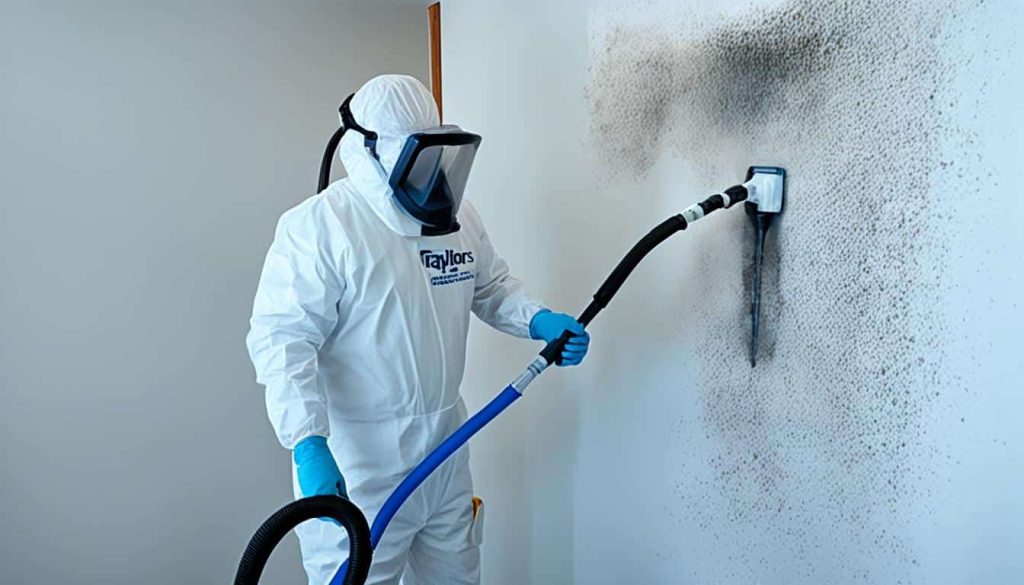Mold is a pervasive problem that can affect both indoor and outdoor environments. Thriving in warm, damp, and humid conditions, molds reproduce by releasing spores into the air. These spores are incredibly resilient, capable of surviving in adverse conditions that would typically inhibit mold growth. When faced with a mold issue, many homeowners contemplate handling the removal themselves. However, consulting a professional for mold removal services often proves to be a more effective and safer option.
Array of Solutions, a trusted name in mold removal in Greenville South Carolina since 2007, stands ready to tackle your mold woes. With our expert mold inspection Greenville services and EPA-Registered credentials, we’re equipped to detect, remove, and prevent mold growth in your home or business.
Table of Contents
Mold Removal Services: Should I Seek a Professional or Handle It Myself?
While DIY mold removal might seem like a cost-effective solution, there are compelling reasons to consider professional help. Molds have a range of adverse consequences that can escalate if not properly addressed. The complexity of mold remediation and the potential health risks associated with improper handling make professional intervention a prudent choice.

Understanding Mold Growth and Its Impact
Mold growth is directly linked to moisture problems within a building. Common causes include uncontrolled humidity, poor ventilation, and water leaks. Buildings that are tightly sealed without adequate airflow are particularly susceptible to moisture accumulation. Mold thrives in these environments, making it crucial to address the root causes of moisture issues.
A professional mold remediation specialist will conduct a thorough evaluation of your property to identify and address these moisture problems. They can pinpoint issues such as improper landscaping, faulty gutters, unvented combustion appliances, and delayed or insufficient maintenance—all of which contribute to mold growth.
The Importance of Professional Expertise
One of the primary reasons to engage a professional for mold removal services is safety. Mold removal involves dealing with potentially hazardous materials and environments. For those with allergies or respiratory issues, exposure to mold can exacerbate health problems. Professional remediators are trained to handle these situations safely, minimizing the risk of spreading mold spores into the air and avoiding health complications.
Professionals use specialized equipment and techniques to ensure that mold is removed effectively and safely. This includes using protective gear to avoid inhaling mold spores and implementing measures to prevent mold spores from becoming airborne. Proper containment and ventilation techniques are crucial to ensuring that the mold removal process does not inadvertently spread contamination.
The Financial Implications of Mold Damage
Beyond health concerns, mold can significantly impact the value of your property. Mold infestations can devalue a home by 17-25%, according to property valuation experts. Mold damage often results in visible marks on walls, rafters, and decks. In severe cases, affected materials may need to be replaced or repainted, which adds to the cost of remediation.
Homes with a history of mold issues can be less attractive to buyers. Potential buyers may be wary of purchasing a property with a mold history, or they may negotiate a lower price to account for the anticipated cost of mold remediation. Professional mold removal services can help mitigate these concerns by ensuring that the mold is completely eradicated and that any damage is properly repaired.
The Professional Approach to Mold Remediation
Professional mold remediation involves several critical steps:
Assessment and Inspection: A professional will conduct a detailed inspection to identify the extent of mold growth and the underlying causes of moisture issues.
Containment: To prevent the spread of mold spores, the affected area is contained using barriers and negative air pressure systems.
Removal and Cleanup: Mold-infested materials are carefully removed and disposed of. The area is then cleaned and disinfected using specialized equipment and products.
Restoration: After mold removal services, any damaged materials are repaired or replaced, and preventative measures are implemented to address the source of moisture.
Prevention: A professional will provide recommendations to prevent future mold growth, such as improving ventilation, managing humidity levels, and maintaining gutters and drainage systems.

Conclusion
While DIY mold removal might seem appealing, the complexity of the task and the potential health risks involved make professional help a better choice. Mold removal professionals offer expertise, specialized equipment, and safety precautions that are essential for effectively addressing mold issues. By consulting a professional, you can ensure that your home is thoroughly cleaned and repaired, preserving both its value and the health of its occupants.

